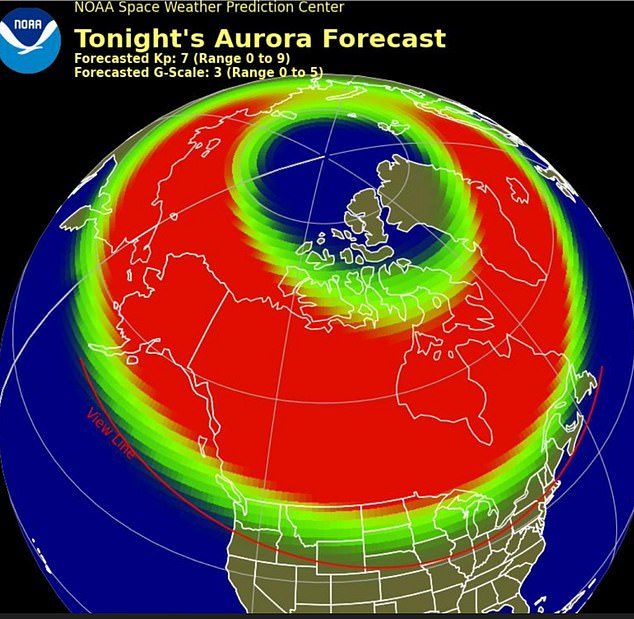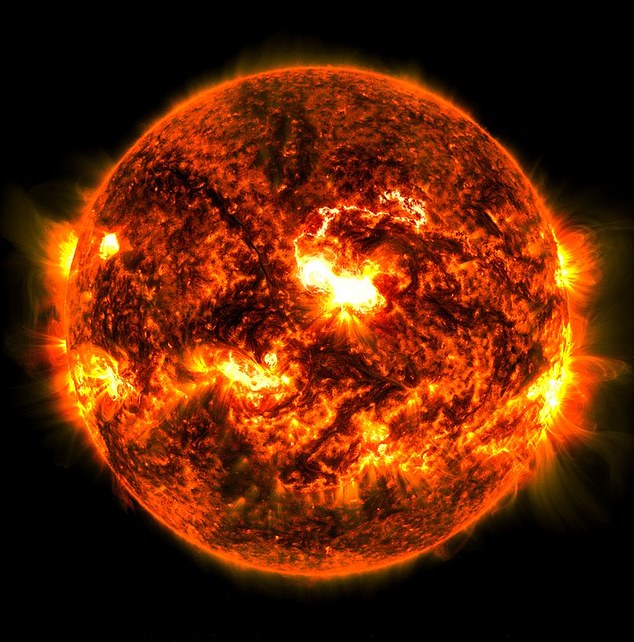A severe solar storm is hitting Earth and could further stress power grids as the United States deals with outages caused by Hurricane Milton that hit Florida.
The National Oceanic and Atmospheric Administration (NOAA) issued an extreme geomagnetic storm warning for the next two days after the sun released a powerful burst of energy on Tuesday.
The Level 4 geomagnetic storm began hitting Earth around 9:30 a.m. ET and is expected to continue through Friday.
It could cause radio blackouts, satellite outages, and GPS issues.
It could also damage or disrupt the power grid, which could add more misery as the United States recovers from the devastating aftermath of Hurricane Milton.
G4 storm warnings are rare, making this only the second NOAA has issued since 2005.
Officials are warning the United States to prepare for a severe solar storm that could place even more demand on power grids affected by Hurricane Milton.
New York City officials are among those warning the public about the impending G4 storm.
Aries Dela Cruz, spokesperson for New York City Emergency Management, said: “We are monitoring the effects, but the public does not need to take any action at this time.”
‘Obviously we don’t want to alarm people. “We just want people to not be surprised if Google Maps stops working or something.”
Sunspot AR3848, a dark, rapidly growing region of strong magnetic fields on the sun’s surface, produced a strong X1.8-class solar flare, which can cause blackouts and overload the power grid.
Solar flares are powerful bursts of radiation that come from a release of magnetic energy associated with sunspots. They are the largest explosive events in the solar system.
After the solar flare erupted, a second burst of high-energy particles and solar plasma headed straight for Earth. This is called coronal mass ejection or CME.
The CME is the one causing the G4 storm.
It hurtled toward us at about 750 to 800 miles per second and reached Earth Thursday morning, causing a disruption in the Magnetosphere: The region of space surrounding our planet that is dominated by its magnetic field.
This disturbance is known as a geomagnetic storm. It reached strength G4 at approximately 1:00 pm ET, according to NOAA.
Geomagnetic storms can also cause dazzling auroras to appear at unusually low latitudes, and they could be visible in “much of the northern half of the country” on Thursday, “perhaps as far south as Alabama to northern California,” according to the NOAA.
But like solar flares, they can also cause radio blackouts, disrupt satellite communications, and damage power grids.
“While the public does not need to take any action at this time, we always encourage everyone to stay informed through Notify NYC and have an emergency plan in place that includes an AM radio emergency bag,” NYC Emergency Management posted on X , formerly Twitter.

Geomagnetic storms can also cause dazzling auroras to appear at unusually low latitudes, and they could be visible in “much of the northern half of the country” on Thursday, “perhaps as far south as Alabama to northern California,” according to the NOAA.
Although these events are rare, this is not the first high-intensity geomagnetic storm to occur this year.
On May 10, Earth experienced the strongest solar storm in two decades when a G5, or “extreme” storm, hit. This triggered one of the strongest auroral displays recorded in the last 500 years.
This week’s solar activity adds to growing evidence that the sun has entered its solar maximum, the period during its 11-year cycle when solar activity is at its peak.
In 2019, scientists predicted that solar maximum would begin around July 2025. But as the sun’s activity increased throughout 2024, it became clear that this peak would arrive much sooner than expected, leading experts to review your forecast.
The sun has already triggered 41 X-class solar flares this year. According to spaceweather.com, that’s more than has happened in the last nine years combined.
In an average year, class X solar flares only occur about 10 times.
Solar maximum could last at least one more year, so we can expect to see much more intense solar flares, CMEs, and geomagnetic storms hitting our planet in 2025.


